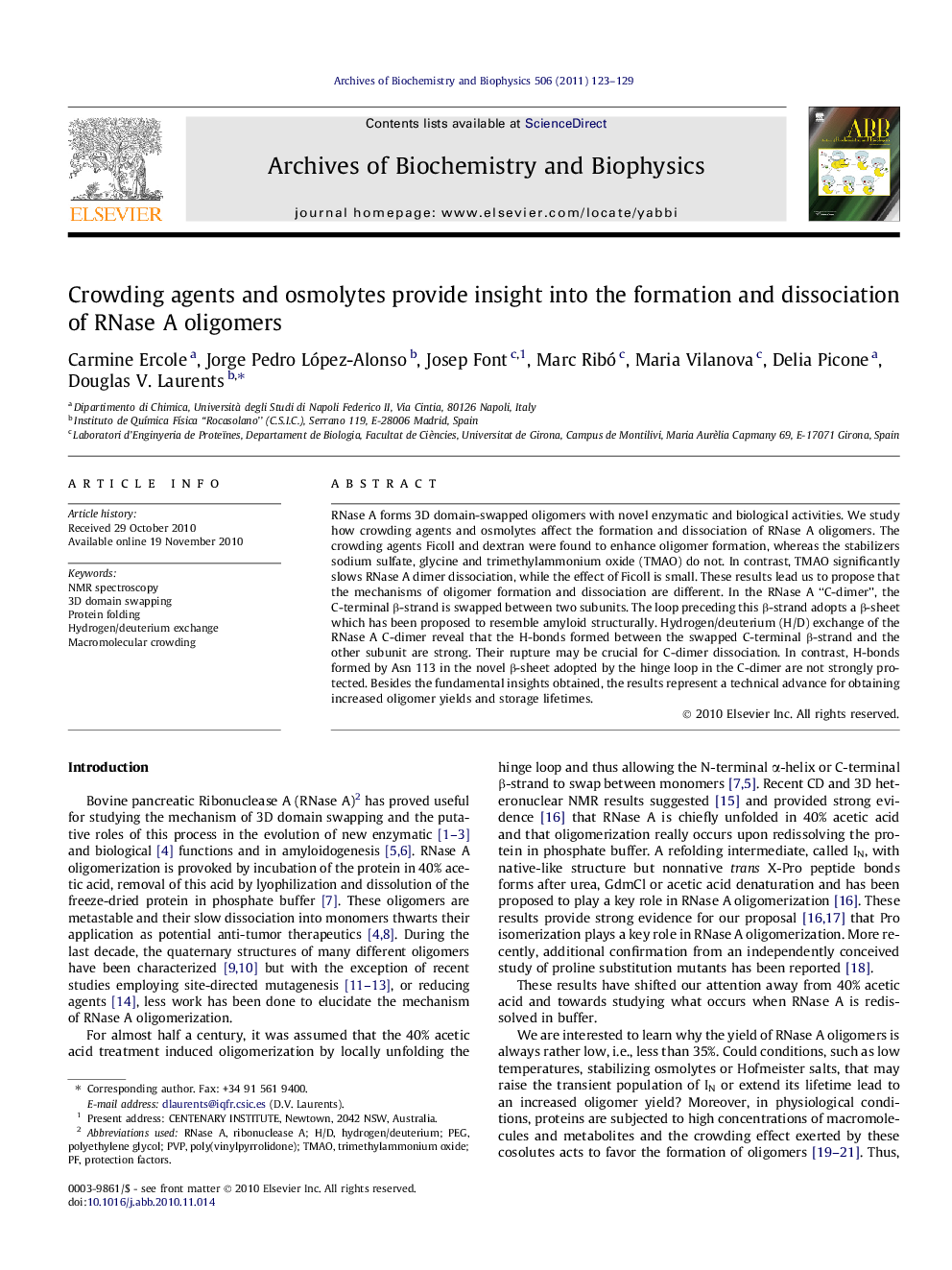| Article ID | Journal | Published Year | Pages | File Type |
|---|---|---|---|---|
| 1925787 | Archives of Biochemistry and Biophysics | 2011 | 7 Pages |
RNase A forms 3D domain-swapped oligomers with novel enzymatic and biological activities. We study how crowding agents and osmolytes affect the formation and dissociation of RNase A oligomers. The crowding agents Ficoll and dextran were found to enhance oligomer formation, whereas the stabilizers sodium sulfate, glycine and trimethylammonium oxide (TMAO) do not. In contrast, TMAO significantly slows RNase A dimer dissociation, while the effect of Ficoll is small. These results lead us to propose that the mechanisms of oligomer formation and dissociation are different. In the RNase A “C-dimer”, the C-terminal β-strand is swapped between two subunits. The loop preceding this β-strand adopts a β-sheet which has been proposed to resemble amyloid structurally. Hydrogen/deuterium (H/D) exchange of the RNase A C-dimer reveal that the H-bonds formed between the swapped C-terminal β-strand and the other subunit are strong. Their rupture may be crucial for C-dimer dissociation. In contrast, H-bonds formed by Asn 113 in the novel β-sheet adopted by the hinge loop in the C-dimer are not strongly protected. Besides the fundamental insights obtained, the results represent a technical advance for obtaining increased oligomer yields and storage lifetimes.
Research highlights► Dextran and Ficoll increase the yields of RNase A oligomers. ► Stabilizing osmolytes slow RNase A oligomer dissociation. ► Rupture of intersubunit H-bonds is key for C-dimer dissociation.
